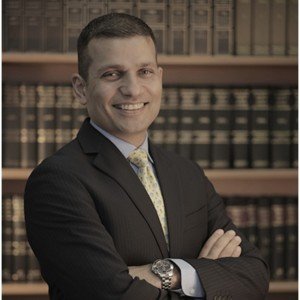Unpacking the complexity of amending a patent application in India
31 December 2022

The Indian Patents Act (39 of 1970, hereinafter, the Act) allows amendment of a patent specification, both before and after the grant of patent. Section 59 of the Act prescribes limitations on kind of amendments that are permitted, and states: No amendment of an application for a patent or a complete specification or any document relating thereto shall be made except by way of disclaimer, correction or explanation, and no amendment thereof shall be allowed, except for the purpose of incorporation of actual fact, and no amendment of a complete specification shall be allowed, the effect of which would be that the specification as amended would claim or describe matter not in substance disclosed or shown in the specification before the amendment, or that any claim of the specification as amended would not fall wholly within the scope of a claim of the specification before the amendment. (emphasis added)
A bare reading of the provision implies that three kinds of amendments – disclaimers, corrections and explanations are permissible. Every amendment should also have support in the pre-amended specification, and an amendment should not result in broadening of scope of specification and claims by requiring that the amendment should not claim or describe matter not in substance disclosed or shown in the specification before the amendment, or that the amended claims should fall wholly within the scope of a claim of the specification before the amendment. However, the Patents Act does not define the terms disclaimer, correction or explanation”. And the Manual of Patent Practice and Procedure, the guide followed by examiners and practitioners, is also silent on what these terms mean. Additionally, the Manual has no explanation on how the patent office should interpret the scope and support requirements recited in the statutory provision.
Due to lack of objective guidelines, unfortunately, the practice among different examiners at the Patent Office on interpretation of Section 59 varies greatly. What is considered a disclaimer, a correction, or an explanation is completely at the discretion of the examiner. For instance, some examiners allow addition of limitations in claims if such limitations are present in the written description, while others interpret the scope requirement to mean that any amendment to claims must be supported in verbatim by the pre-amended claims.
One reason for the latter position is that addition of features from the written description into the claims changes the scope of the claims because the pre-amended claims are not similar to amended claims. When the change that is being sought does not expand the scope of the claims, this explanation seems to be counterintuitive to the very purpose of an amendment. Another explanation that adds some perplexity to what is permissible is that whatever subject matter did not make it into the claims in the first instance is forever disclaimed. Then, there is the issue of whether incorporating a feature from a drawing/figure into the claims is allowed – this, once again, is a hit or miss depending on the examiner in question. The above approaches cause consternation to applicants, because they go against the plain meaning (and intent) of Section 59 which does not require literal support but, rather, speaks specifically about scope and, disclosure “in substance”.
Judicial forums have offered some clarification, although there are still a few more miles to go before we can rely on judicial precedents when an applicant is looking to amend the specification or claims of a patent application.
Role of description in analyzing the scope of amendments
In 2009, the Delhi High Court, in AGC Flat Glass v. Anand Mahajan, I.A. No. 13519/2007 in CS (OS) No. 593/2007, addressed the issue of scope of amendments which are in the nature of “disclaimer”. The invention at issue related to a mirror having no copper layer and, Claim 1 recited the composition of a mirror. Clause (ii) of Claim 1 recited that the mirror contains one material selected from a group of elements recited in clause (i). After grant, the patentee wished to add a limitation “a sensitizing material, typically tin” in Clause (ii). Claim 9 was related to a process of manufacturing the mirror, and it included a step of sensitization. The defendant objected to the proposed amendment on the ground that it would change the scope of monopoly granted by the patent because the proposed clause was not present in pre-amended claims.
Departing from the oft taken view at the Patent Office that amended claims should have verbatim support in pre-amended claims, the court opined that absence of a dependent claim in original specification cannot, by itself, be a reason for refusing the amendment.
Applying the rules of interpretation to patent specification, the court held that: “It is settled cannon of interpretation that for construing any instrument or document, the entire document/ instrument has to be read as a whole so as to infer the intention of the parties and the same is not to be read in isolation and given an isolated meaning dehors the instrument. Thus, it is imperative to read the entire specification and to see as to whether these words ‘a sensitizing material, typically tin’, which are intended to be added, alter the scope of the patentee’s invention.”
Thus, reading Claim 1 along with Claim 9, the court took the view that since the proposed amendment had support in Claim 9 and description, the amendment would not fall outside the scope of originally filed claims.
This line of reasoning was adopted by the erstwhile Intellectual Property Appellate Board (IPAB) in Solvay Fluor GmBH. v. E.I. Du Pont de Nemours and Co., M.P. No.36/2009 in TRA/7/2007/PT/KOL, 2009. The invention in this case was related to a “fire extinguishing composition” which was challenged by way of a revocation, alleging that the invention falls under Section 3(d) and 3(e) of the Act. It was also alleged that the invention was related to a known compound and not a composition as claimed by the patentee.
To counter this assertion, through an amendment, the patentee wished to clarify that the invention was “a synergistic composition, comprising a fire extinguishing agent and a propellant, which are two separate elements and distinct”. The proposed amendment was opposed primarily on the ground that it went beyond the scope of originally filed description. The IPAB eschewed the approach of literal support and opined that though the synergistic effect was not stated explicitly, it was readily ascertainable from the description. Therefore, the IPAB allowed the proposed amendment.
The IPAB was a quasi-judicial body that heard, inter alia, appeals against refusal orders. With the The Tribunals Reforms Act 2021, the IPAB was abolished and jurisdiction to hear appeals against refusal orders now lies with the High Courts.
Amendments supported by drawings
Often, examiners object to the amendments that are supported only by drawings on the ground that incorporation of a feature solely from drawings violates the scope requirement of Section 59. The IPAB ruled against this practice in Prism Cement v. Controller of Patents, OA/7/2016/PT/MUM, 2020. During prosecution, the examiner had rejected two separate amendments to the claims. The first amendment incorporated the term “open channel” while the description had used the term “channel”. In the second amendment, the “position of non-return valve” was amended based on Figures 1-4. The IPAB ruled that amendments to claims that are supported by the drawings, can be allowed. Further, addition of the word “open” to the channel in claim 1 narrowed the scope of the claim and was permitted. According to the IPAB, the amendments did not introduce any new matter in the specification which was not previously disclosed and, the amendments were “explanation” of existing subject matter. The IPAB, therefore, stressed that the description and drawings have to be read together while deciding the validity of amendments under Section 59.
Addition of dependent claims
Addition of dependent claims is often objected to by the examiner on the ground that addition of such claims will result in expanding the scope of protection afforded by originally filed claims. In the case of Tony Mon George The Regents of the University of Michigan v. Controller of Patents and Designs, OA/48/2020/PT/DEL, 2020, the IPAB set aside an order that had refused the patent application on the ground that addition of dependent claims were not allowed under Section 59. The IPAB delved into the nature of amendments and reasoned that because the new dependent claims were added “to qualify the features already covered in the principal claims”, such amendments should be permitted. The tribunal observed that when dependent claims are added, the question is “whether the claim inserted is ‘new’. Does it define any ‘new’ feature(s) hitherto not defined in the body of the claims?” In reaching its decision, the IPAB noted that since both pre-amended and amended claims were related to “[a] composition comprising an isolated antibody or antigen-binding fragment thereof...”, they cannot be termed as new, especially when the claims are supported by the description.
Scope of amendments
Recently, in October 2022, the Delhi High Court, in Nippon A &L Inc. v. The Controller of Patents, C.A.(COMM.IPD-PAT) 11/2022, dealt with the issue of how scope of amendments must be analysed under Section 59 of the Act. During prosecution, the copolymer latex related product by process claims were amended to recite process claims. The Patent Office refused the application stating that the scope of the amended claims was beyond the originally filed claims. The Patent Office also reasoned that the amended claims were not supported by the description. On appeal, the Patent Office defended its decision on the ground that the applicant had change the nature of claims by converting product by process claims to process claims. The court disagreed and held that such an amendment, in effect, narrowed the scope of the claims and, therefore, was permissible. In arriving at its decision, the court addressed several issues which are worthy of discussion.
First, the court reviewed the Report on the Revision of the Patents Law (1959) by Justice N. Rajagopala Ayyangar and made an important observation that “the purport and intention of th[e] Report was to give broader and wider permissibility for amendment of claims and specification prior to the grant” and that “the invention before and after amendment need not be identical in case of amendment before acceptance ‘so long as the invention is comprehended within the matter disclosed’.” Interpreting the amendments within the above framework, the court held that “[s]o long as the invention is disclosed in the specification and the claims are being restricted to the disclosures already made in the specification, the amendment ought not be rejected, especially, at the stage of examination prior to grant.”
In doing so, the court agreed with the ruling in AGC Flat Glass and held that “[w]hen the applicant seeks to narrow down or crystalise the claims, ultimately limiting the scope of invention, the amendment ought to be ordinarily allowed. The only consideration that must be kept in mind is that the amended claims are not inconsistent with the earlier claims in the original specification.” Accordingly, it is imperative that support for amendment of claims be seen with regard to the complete specification and not be restricted to the pre-amended claims.
Second, with respect to the scope of protection, the court discussed the differences between product and process claims. The court held that “product claim, if granted, confers a monopoly on the patentee for the product itself, irrespective of the process by which the said product could have been made. However, in the case of a process claim, the exclusivity or the monopoly is restricted to the manner/method by which a particular product is manufactured and if the same product is manufactured or achieved through a different process/method, the exclusivity of the patentee cannot usually extend to such different process or to the product manufactured by the different process. When there are ‘product by process’ claims, however, the extent of monopoly depends upon the reading of the claims in each case.”
The court opined that since the “product by process” claims confer a broader monopoly than “process” claims, the scope of the claims were narrowed after amendments. Thus, rather than focussing on specific additions or deletions of claims, the court analysed the overall change in scope of claims in this case. The court set aside the refusal order with respect to amendments and remanded the matter back to the Patent Office for further examination.
Conclusion
The approach of the Delhi High Court in arriving at its conclusion in Nippon A&L is somewhat aligned to the rationale given in AGC Flat Glass and other decisions of the IPAB discussed above. In all these decisions, a common theme has been the judicial forum’s insistence on a comprehensive reading of the description and drawings, and rather than verbatim support, the Patent Office should recognize that Section 59 requires amendments to fall within the scope of pre-amended specification (not just the claims). While the practitioners will certainly be referring to the recent judgment for guidance in their respective cases, there is also a need that examiners’ approach is also aligned with the principles laid down in judicial pronouncements so that the existing variation is practice at the Indian Patent Office is reduced, and the patent office departs from its restrictive stance on pre-grant amendments.









